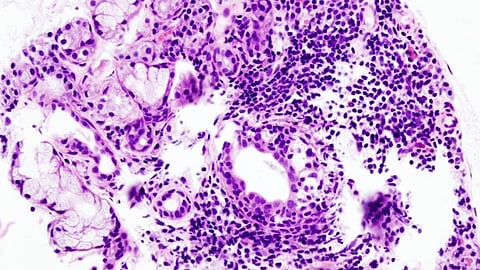A new study from researchers at Regenstrief Institute and Indiana University School of Dentistry reports on linking electronic health records and electronic dental records to provide better care and outcomes for individuals with Sjogren's disease, an autoimmune disorder that can affect the entire body, including teeth. Their work may have implications for other systemic autoimmune diseases, including lupus and possibly rheumatoid arthritis.
Sjogren’s is a chronic autoimmune connective tissue disorder affecting four million Americans plus an unknown number who are undiagnosed. Patients with this condition may also have other autoimmune disorders.
Historically, because of the separation of dental and medical care, electronic medical and dental records are not linked or routinely shared. Dental providers rely on patients to report their diagnosis of Sjogren's as this information is not conveyed by their physicians. As a result, dentists typically recognize the patient’s condition late in the disease process when tooth decay leading to significant tooth loss is manifested.


